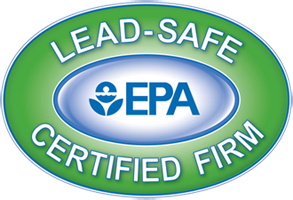2020 Hardwood Flooring Trends
from Uptown Floors
Today’s hardwood flooring trends show brownish to darker stained products selling quite well in northern states, reds and browns in the prairie states (Texas, Oklahoma and others) and mountain regions. The popularity of greige and beige browns are seeing good demand along coastal areas or warmer regions that include Florida, Southern California and Arizona.
How Long Will Grey Last? The Trend Is Ending
Prominent grey colored hardwood floors have been strong the last 6-7 years. With hardwood floors strong trends usually last five years, then something else comes along or so it seems. This may also be true of heavy character European or French White Oak floors which everyone seems to sell if you’re in a trendy market. It’s now reaching it’s five year mark and we’re hearing the some unfavorable comments and opinions. Unfortunately some buyers are led to believe these same floors are actually made in Europe. Yes some are, but a very large proportion are manufactured in China.
Greige = Grey + Beige
The grey trend has evolved in the last 12-18 months. Nowadays browns, beige and a touch of grey are in demand. Greige is the new buzzword.
Natural Finished Hardwoods Making A Comeback
It was only a matter of time before savvy homeowners began turning back to traditional hardwoods without trendy colors and other effects. 2017 and 2018 saw a renewed interest for reasons of becoming neutral and ‘thinking ahead.’ Better explained from some of our buying customers with comments like; “I don’t want to regret my decision when it comes to selling my home” or “I’m not sure I want to go through the hassle of changing everything when grey goes out of style.”
Distressed?
Heavier hand scraped or contoured products, the rage that started around 2005 has taken a back seat in most areas, while a softer wire brushed ceruse effect seen mostly on White Oak has been remarkably strong showing no effects of becoming “dated” like the others mentioned. Reclaimed hardwoods will always be welcomed but it’s popularity has never taken a front row seat.
Most Popular Types of Hardwood?
Red oak remains strong in the sand and finish market while making signs of a comeback with finished and prefinished. White Oak has taken on a renaissance with a large number of character graded prefinished hardwoods. Hickory remains strong, while being used more for distressed type floors or offering the rustic choice. Lighter toned hardwoods in the likes of Maple and Birch have lost favor in their natural finished form, but are still desired for those seeking a cleaner contemporary look. Exotics have taken a sizable hit as has bamboo. Brazilian Cherry, the rage of 10 and 15 years past, is seen less and now replaced by the trendier character grade hardwoods and a return to less pronounced natural colors without the heavy character.
Factory prefinished wood flooring remains the selection of choice over actual on site installation and finishing. Reasons include faster completion schedules as the flooring is ready to be used immediately instead of waiting for finishes to cure. [However, onsite installation have a longer life and can be refinished more often.]
Longer Length Hardwoods
Wider plank flooring has seen a dramatic increase in use since the turn of the century. Some prefer their appearance as it can open up rooms that may otherwise feel or look smaller. Along with wider plank hardwoods, longer length material is becoming more the norm. By way of explanation, I’ll offer an example.
In the late 90’s Anderson was king of the hand scraped market; the innovator really. Others followed suit going into the new century, along with a tidal wave of Chinese knockoffs, but nearly all consisted of short length engineered hardwoods that weren’t any longer than 42 or 48 inches. Most didn’t notice it until we took notice thinking…”if we can produce a solid hardwood with longer lengths, why can’t we do the same for engineered?”
Why Longer Lengths? For one, they’re more traditional. Along with that the desire for wider plank appearances didn’t make sense with short pieces. I like to call it the checkerboard look (first image below). An installed 7 inch wide plank for example, looks exceptional with longer boards opposed to shorter ones due to the bevel or micro bevel on prefinished hardwoods.
Plank Size?
Plank width size has been increasing since five inch wide planks came on stream with Anderson and other prefinished manufacturers at the turn of the century. Over the most recent five years or going back to 2013 we’re seeing more 7 ½” planks, practically all imported from China. 7 ½” width for the most part, is a dead giveaway as very little of it is made in the USA. USA made commonly uses a 7 or 7 1/4″ dimension. [This may be the trend, however, in Denver’s climate, the boards trend to warp at this width.]
Types Of Finishes
Today, low matte finishes (10-20%) are the norm with mid to higher end floors, but satin rules at 30-40%.
[Van Camp’s finish 95% with satin /sheen.]
Natural Oil Finishes? Good or Bad?
On the higher end and those seeking environmentally friendly choices, natural oil finishes have been gaining popularity, but do have their own set of pros and cons. These finishes contain little if any VOC’s and are much easier to repair. However, they can be a maintenance headache for some and premature color wear in high traffic areas can be a reality. Additionally, for those that obsess with perfection, water and grease spots can be problematic. [Stains will penetrate the boards since they are not sealed on top.] Ideally, these finishes are suited more for those that have professionals maintain their floors. Or if you have plenty of time to look after them yourself; not always an easy task.



